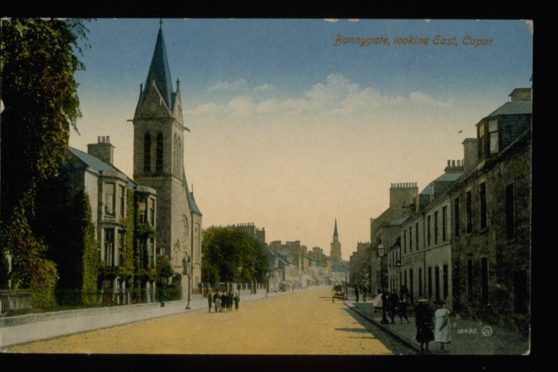Concerns over where toilets were positioned and how a court fixed how bread was weighed all form part of a new study into a Fife town’s records.
The Cupar Burgh Council Records are the current focus of archival cataloguing by St Andrews University, which hopes to uncover new information about the market town’s history.
An open day is being held in the town to reveal what has been discovered in the first year of the ‘Hidden Burgh: Restoring Cupar’s Place at the Heart of Fife’.
Original documents and volumes from the Burgh collection telling the story of Cupar from 1341 to 1975 will be on display at the Cupar Baptist Church Hall from 3pm to 6.30pm on October 16.
The community heritage project is the result of an application by the University Library’s Special Collections to the Archives Revealed grant funding programme.
Project archivist Christine Wood said: “Many interesting details have come to light during the cataloguing process.
“For example, the Act Book of the Burgh Court of Cupar 1760-1815 reveals how the court fixed the weight of various types and sizes of bread which could be sold to the public.
“Also, the Police Commissioner’s minutes of June 1 1857 records how ‘an offensive necessary’ i.e. a toilet, at the top of a close was to be removed to a place ‘where it could not offend anyone’. There are many more fascinating gems within the collection.”
The programme is being run in partnership with The National Archives and The Pilgrim Trust who, along with The Wolfson Foundation and The Foyle Foundation, provided a year’s funding to have the Cupar Burgh Council records catalogued.
Around half of the records were deposited with the university by the National Records of Scotland, the remainder being passed across by the Fife Council Archives so both streams of the collection could be merged together.
The secrets uncovered include the New Roll of Honorary Burgesses which was locked and the key lost.

A locksmith was needed to reveal the contents, which included the names of six people granted the Freedom of the Royal Burgh of Cupar between 1919 and 1975, including Field-Marshall Sir Douglas Haig, John Coutts Duffus and his sister Mrs Margaret Mitchell Gold.

Other interesting details include The Eight Trades of Cupar minutes dated April 12 and 18 1777, which mention a dispute between the kirk session and trades relating to the latter’s right to lofts in the church; and the charge of theft of guild funds by the Dean of Guild James Brugh recorded in the Cupar Guildry minutes of October 13 1718.
The online catalogue can be accessed via the Special Collections page on the University of St Andrews website at https://www.st-andrews.ac.uk/library/specialcollections/collections/archives.










